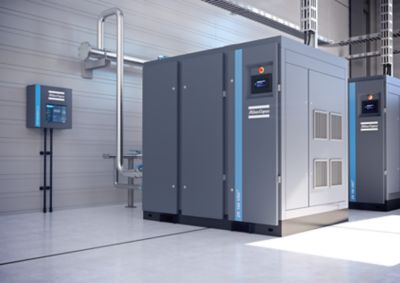Estimated reading time: 4 minutes
Even the sturdiest of equipment requires servicing, whether it’s routinely by law and regulation, when outside forces cause damage, or when the ravages of use slowly build up over time. Knowing the telltale signs of wear and tear, understanding your product’s specifications and usability guidelines, and knowing when it’s prudent to call in repairs are skills that could save you a lot of time, effort, and money in the long term.
Service early
Ultimately, it’s always going to be a better idea to call in a service than it is to call in for repairs, especially for often core pieces of machinery such as air compressors that serve a multitude of applications.
By servicing early, you’re going to be gaining a lot of benefits over leaving a piece of machinery out until it breaks, or until it’s necessitated servicing time occurs.
Firstly, by calling in service when you spot signs rather than when you need it immediately, you’ll be able to tailor the timeline of repairs to suit you. Repair during times when you’ll need the equipment, rather than during times of high use, to maximise efficiency and lower possible downtime.
Secondly, you prevent the risk of total plant shutdown while you wait for core machinery to be repaired. A critical machine going offline can be a disastrous occurrence, especially during high workloads or in industries with strict, competitive deadlines to beat.
Thirdly, air compressors in particular work off efficiency. While a air compressor may be ‘working’ effectively, leaks and other routine maintenance-fixable things can use up 20-30% of your air flow, with an average of 19% across all tested. Over the first ten years of use, an air compressor’s initial capital cost and maintenance cost make up 18% and 7% of total expenditure, while energy accounts for a gigantic 73%.
By servicing early, you’ll cut down leaks that can reach as high as 40-50% loss, and reduce your overall expenditure down significantly. The better maintained, the larger reduction (for 7% average costs) you’ll get your leakage (0.2-0.3 of 72% energy costs).
Knowing the signs
First - Check your manuals
Firstly, it’s important to understand your air compressor. Check how long it recommends before servicing, as most petroleum-based compressors need changing every 500 hours or so, and synthetics around 2,000.
Alongside this, check your console regularly to see if any errors or issues pop up. This might sound simple, but it’s amazing how often such simple issues are overlooked.
It won’t matter how telltale the signs are if you don’t know the equipment you’re dealing with, or aren’t even checking your basic inbuilt warning signs often.
Excess moisture
Whenever an air compressor is running, it accumulates moisture that must be in some way reduced. If your compressor is producing excess condensation, it may be experiencing a fault in the automatic drain system.
Loud noises
Atlas Copco compressors come with a sealed, in-built noise reduction chamber. If your compressor is beginning to make either:
- Too much noise for usability standards
- Significantly more noise than usual
- An extremely inconsistent noise level or
- Any rattling or similar noises
Then you may either have a broken component rattling around, or a fault in the motor.
Frequent tripping breakers
Equipment tripping breakers can signify a multitude of things. Your first response should be to immediately check the electrical circuit powering the compressor, but if there’s no fault there and the system continues to trip breakers or blow fuses, you should have a serviceman or woman come immediately.
High loss of pressure, or low overall air pressure
If your compressor is reporting no air pressure, you more than likely have a reporting problem (unless you truly do have zero). Simply having low air pressure is a mark of either reporting issues, wear and tear on internal or external parts, or sometimes a simple technical issue.
Sometimes this can be easily fixed, but if there is no significant and easy to spot issue at hand, you’ll be racking up a huge amounts of losses in energy costs to keep it running without one.
On/off unresponsive
If you can’t get the air compressor working in the first place, odds are you’re not going to be able to get a good read on what’s wrong with it. The first thing to do is check the circuit and any obvious things, but again: if it’s not obvious, it might be time for a repair job.
Call an expert
If you’re experiencing any of these signs with your industrial air compressor, or just want to make sure that you're able to get the most efficient air compression possible, give Atlas Copco a call on 1.800.667.9875 or use our online air compression services page.

